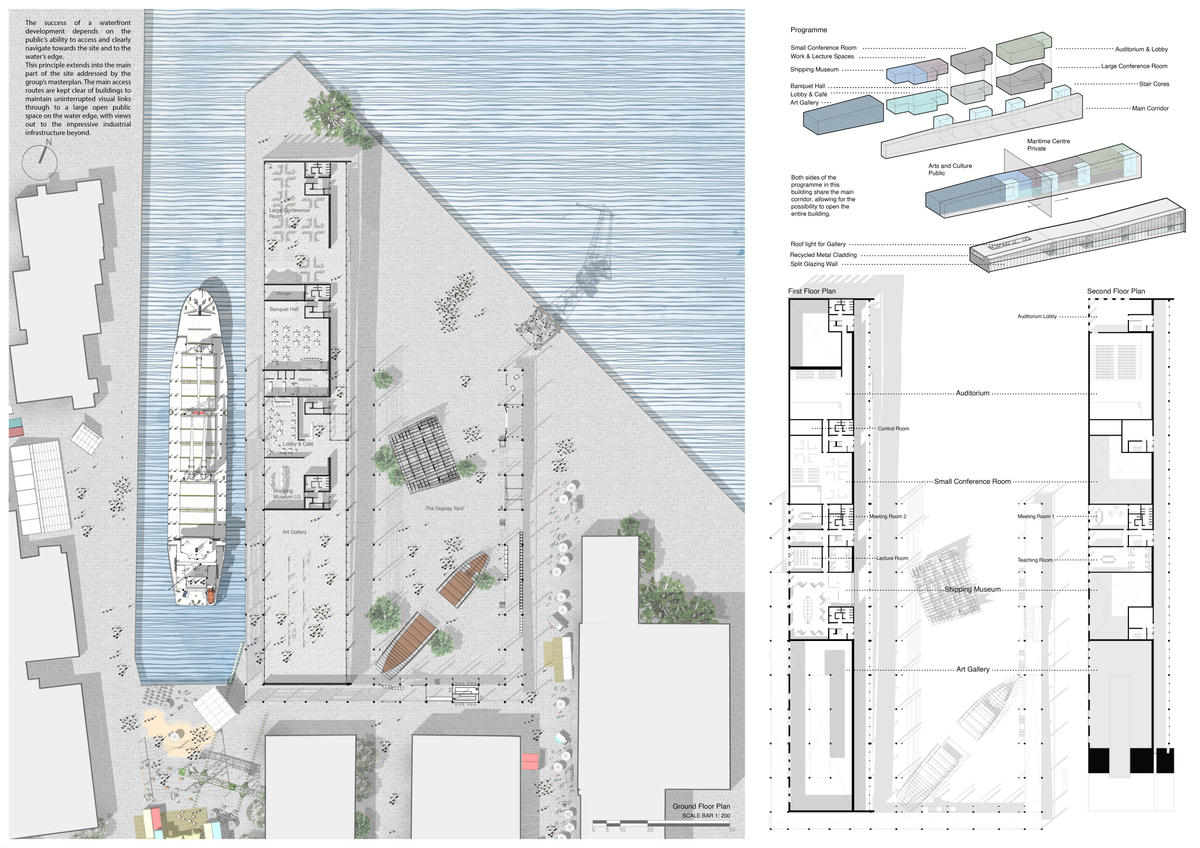The Maritime and Culture Centre






Final wall presentation showing all the final drawings.
This architectural study was a thesis topic that analysed different aspects of what makes a “successful” waterfront development that was then paired with a design response in Gdansk’s own shipyard.
School/Level
Category
Year
With the project situated in Gdansk's historical Shipyard, the topic of my own study was to investigate the waterfront development practice and thus finding what makes the great waterfront manifesto. The Post-industrial void is a challenge shared by many cities. The predicament of how to develop the abandoned industrial waterfront offers new opportunities to reimagine principles of urban architecture. Throughout the 20th century, waterfront regeneration produced many variations in design approaches across the globe from Liverpool to New York, all adding to the waterfront development debate. Analysing these manifesto’s and their degree of success in repairing the physical and social connections within the city has led to a greater understanding of the complexities associated to Gdańsks own historical shipyard. A list of principles and urban achievements emerged in this research that answered what makes a development successful, elements such as better infrastructure, permeability, increased land value…etc. However, what makes the great waterfront manifesto is the principle to preserve an authentic identity that is reflective of its history and society. It was this aspect that was tested in my own individual site. By respecting the historical relevance and the importance of conserving Polish culture, I created a project that preserved and celebrated the memory of its history in shipbuilding and offers a place full of polish culture in the form of a creative urban district.